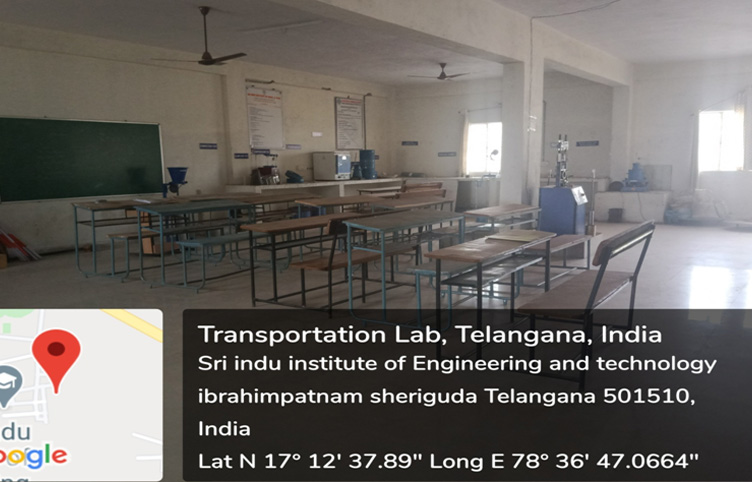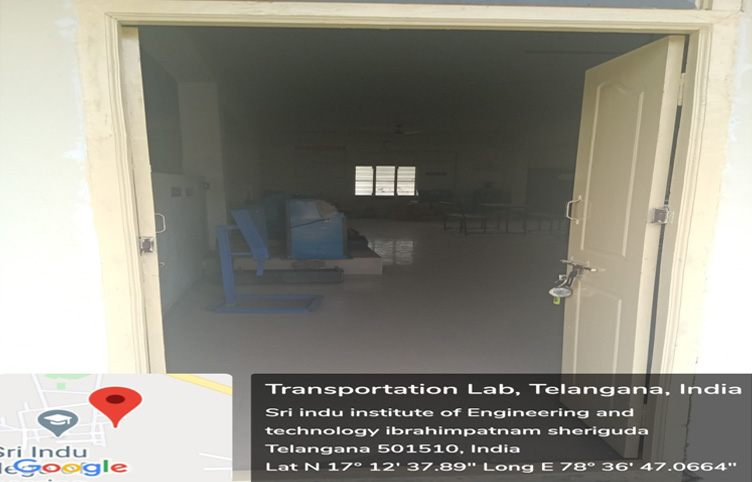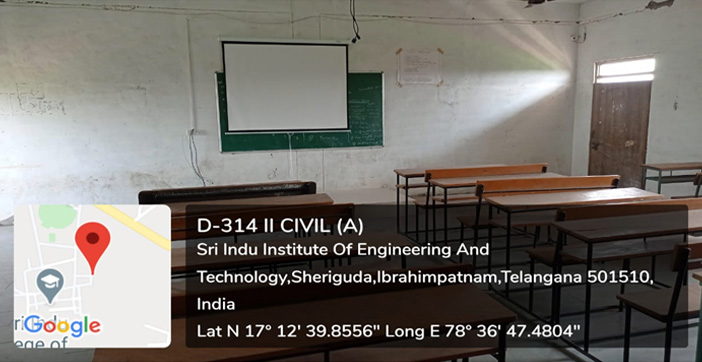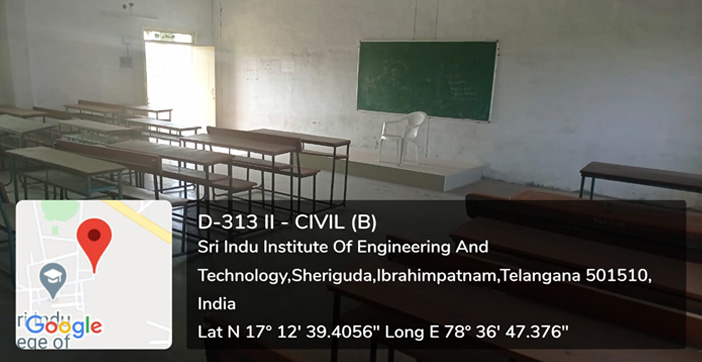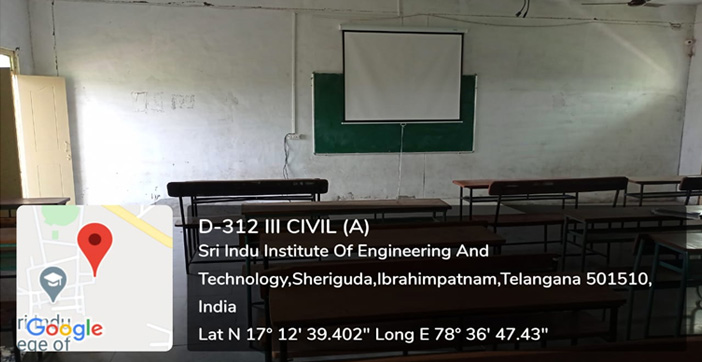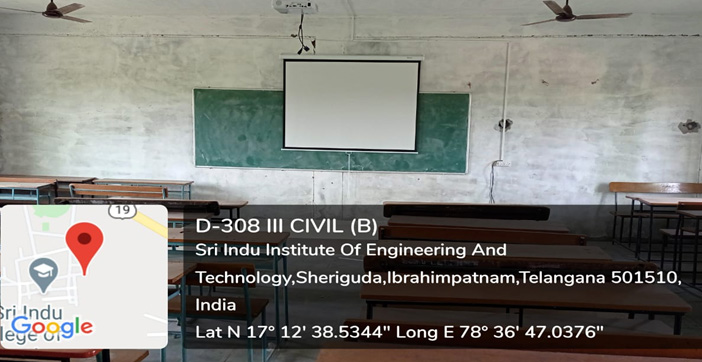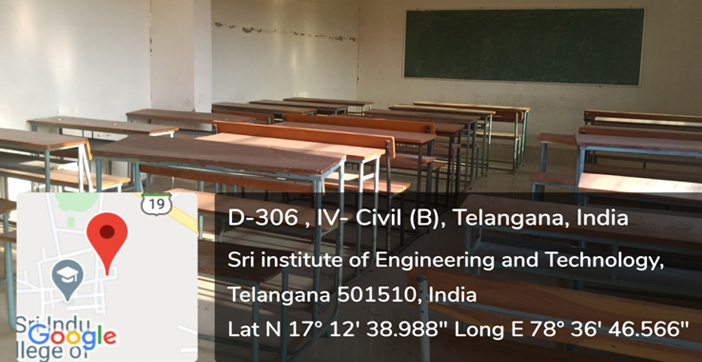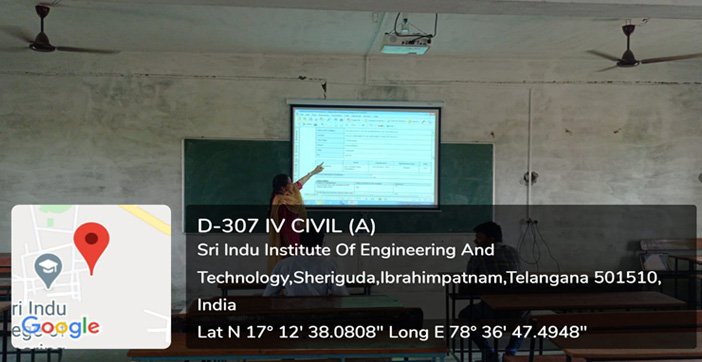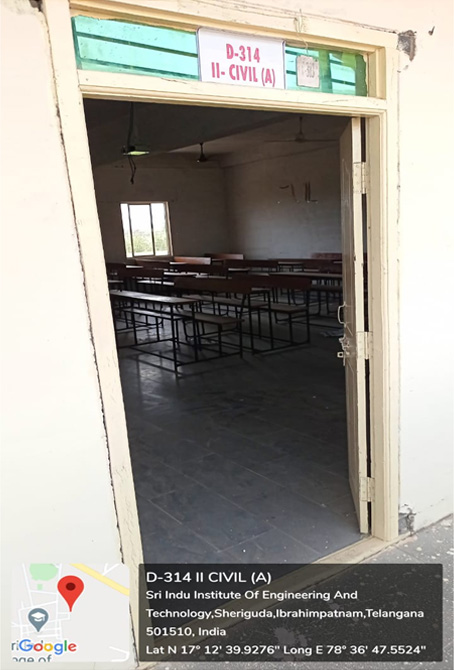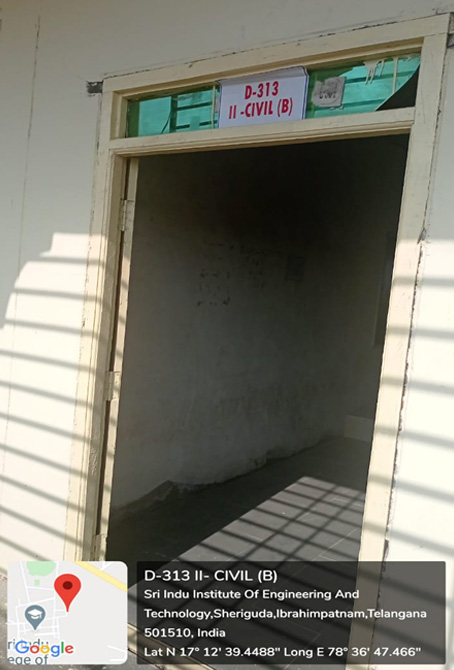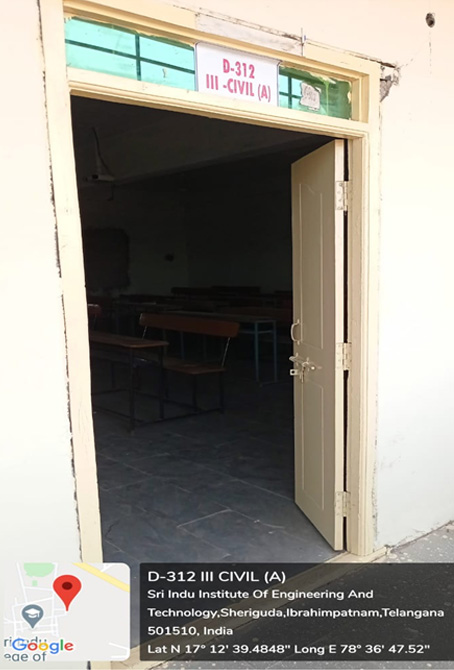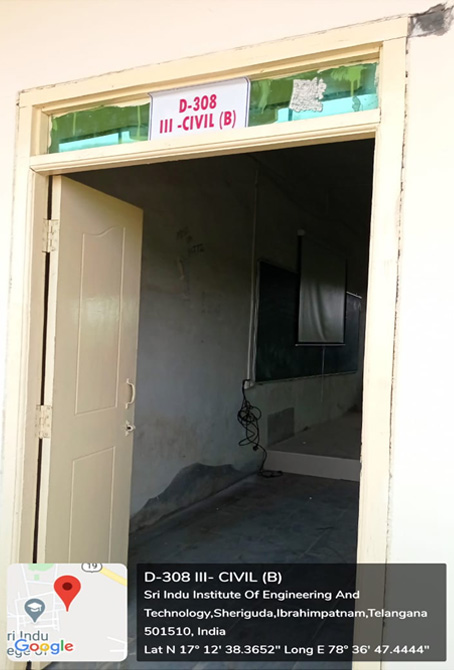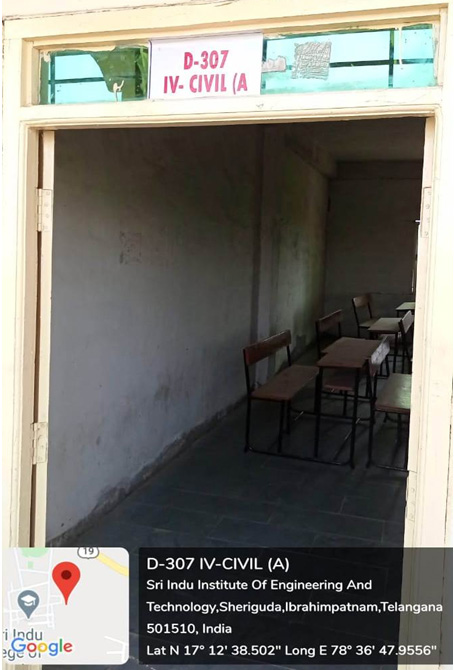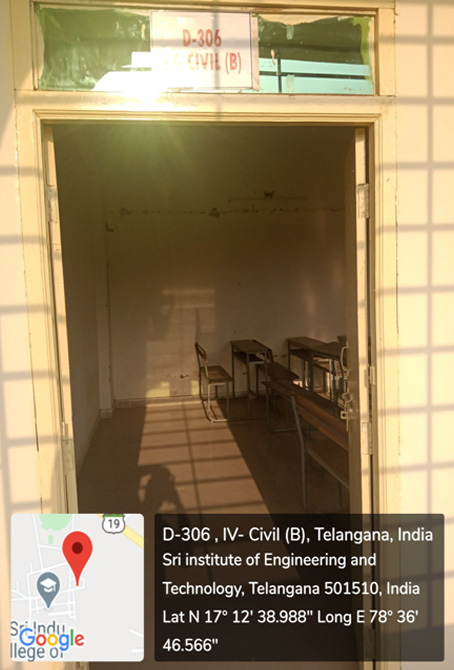Civil Department Laboratories
Labs for II Year I Semester
Objectives
To impart the practical knowledge in the field- measuring distances, directions, angles,
- To determining R.L.’s areas and volumes
- To set out Curves
- To stake out points
- To traverse the area
- To draw Plans and Maps
List of Experiments
- Surveying of an area by chain, and compass survey (closed traverse) & plotting.
- Determine of distance between two inaccessible points with compass
- Radiation method, intersection methods by plane table survey
- Levelling – Longitudinal and cross-section and plotting
- Measurement of Horizontal and vertical angle by the dolomite
- Trigonometric leveling using the dolomite
- Height and distances using principles of tachometric surveying
- Determination of height, remote elevation, distance between inaccessible points using total station
- Determination of Area using total station and drawing map
- Traversing using total station for drawing contour map
- Stake out using total station
- Setting out Curve using total station
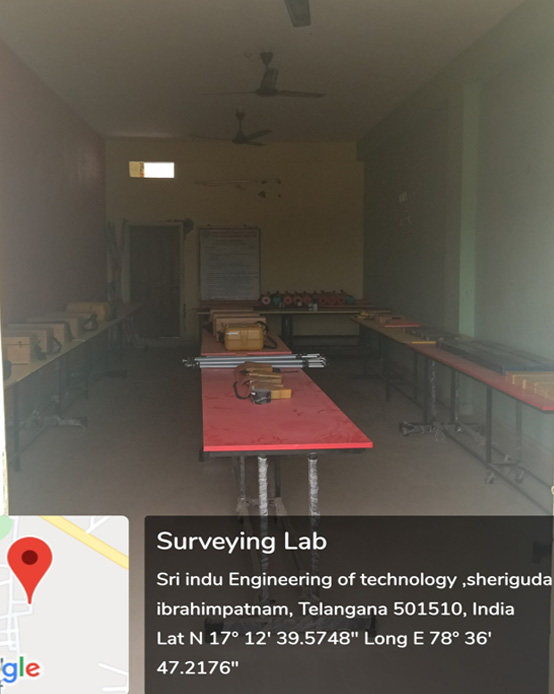
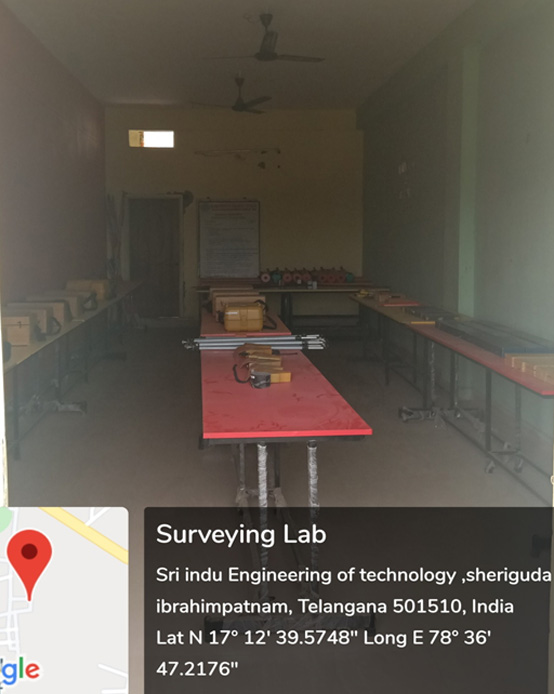
Objectives
- Make measurements of different strains, stress and elastic properties of materials used in Civil Engineering.
- Provide physical observations to complement concepts learnt.
- Introduce experimental procedures and common measurement instruments, equipment devices.
- Exposure to a variety of established material testing procedures and techniques.
- Different methods of evaluation and inferences drawn from observations.
List of Experiments
- Tension test
- Bending test on (Steel / Wood) Cantilever beam.
- Bending test on simple support beam.
- Torsion test
- Hardness test
- Spring test
- Compression test on wood or concrete.
- Impact test
- Shear test
- Verification of Maxwell’s Reciprocal theorem on beams.
- Use of electrical resistance strain gauges.
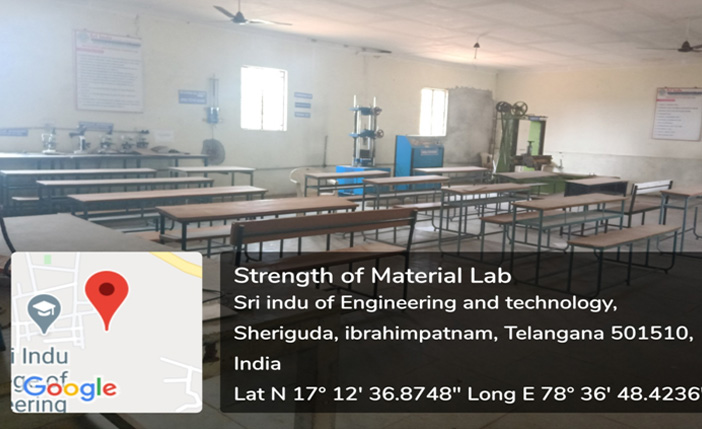
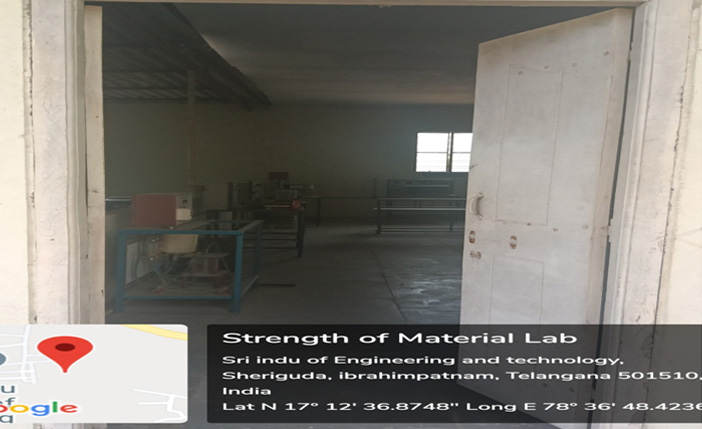
Objectives
The objective of this lab is that to provide practical knowledge about physical properties of minerals, rocks, drawing of geological maps, showing faults, uniformities etc.
List of Experiments
- Study of physical properties of minerals.
- Study of different group of minerals.
- Study of Crystal and Crystal system.
- Identification of minerals: Silica group: Quartz, Amethyst, Opal; Feldspar group: Orthoclase, Plagioclase; Cryptocrystalline group: Jasper; Carbonate group: Calcite; Element group: Graphite; Pyroxene group: Talc; Mica group: Muscovite; Amphibole group: Asbestos, Olivine, Hornblende, Magnetite, Hematite, Corundum, Kyanite, Garnet, Galena, Gypsum.
- Identification of rocks (Igneous Petrology): Acidic Igneous rock: Granite and its varieties, Syenite, Rhyolite, Pumice, Obsidian, Scoria, Pegmatite,Volcanic Tuff. Basic rock: Gabbro, Dolerite, Basalt and its varieties, Trachyte.
- Identification of rocks (Sedimentary Petrology): Conglomerate, Breccia, Sandstone and its varieties, Laterite, Limestone and its varieties, Shales and its varieties.
- Identification of rocks (Metamorphic Petrolody): Marble, slate, Gneiss and its varieties, Schist and its varieties. Quartzite, Phyllite.
- Study of topographical features from Geological maps. Identification of symbols in maps.
- Simple structural Geology Problems (Folds, Faults & Unconformities)
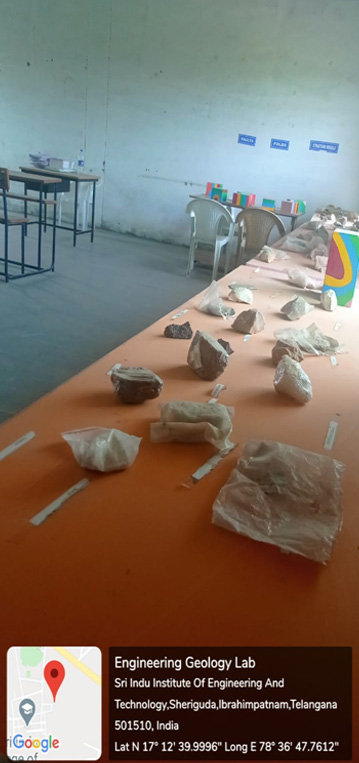
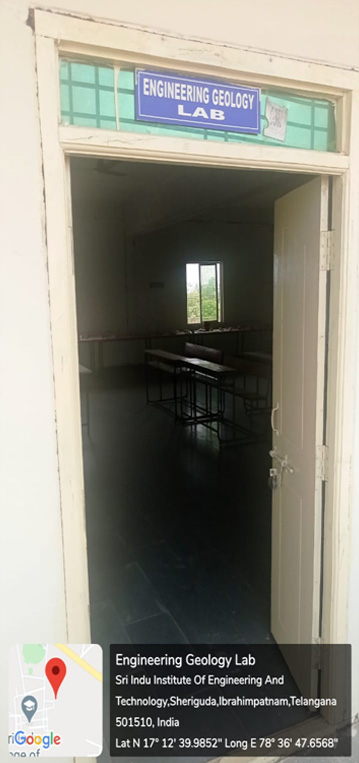
Labs for II Year II Semester
Objectives
The objective of this lab is to teach the student usage of Auto cad and basic drawing fundamentals in various civil engineering applications, Specially in building drawing.
List of Experiments
- Introduction to computer aided drafting and different coordinate system
- Drawing of Regular shapes using Editor Mode.
- Introduction GUI and drawing of regular shapes using GUI.
- Exercise on Draw tools
- Exercise on Modify tools
- Exercise on other tools (Layers, dimensions, texting etc.)
- Drawing of building components like walls, lintels, Doors, and Windows. Using CAD software.
- Drawing a plan of Building and dimensioning.
- Drawing a plan of a residential building using layers.
- Developing a 3-D plan from a given 2-D plan
- Developing sections and elevations for given a) Single storied buildings b) multi storied buildings.
- Auto CAD applications in surveying, echanics etc.
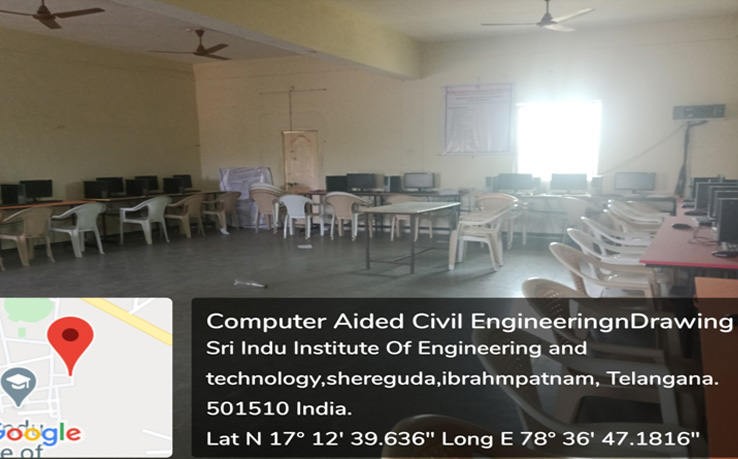
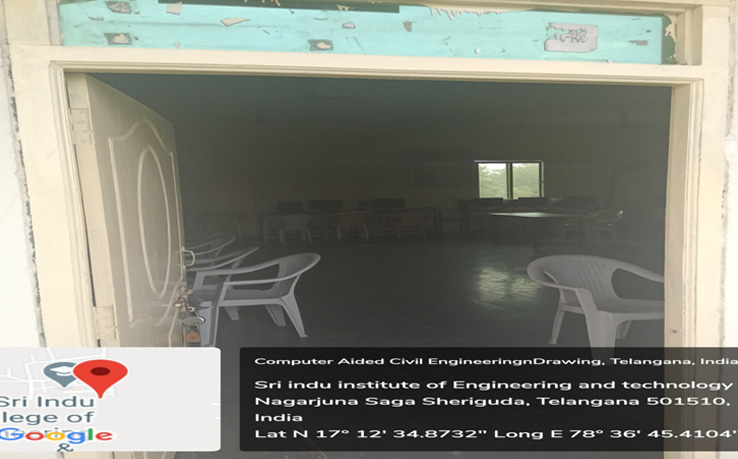
Objectives
- To identify the behavior of analytical models introduced in lecture to the actual behavior of real fluid flows.
- To explain the standard measurement techniques of fluid mechanics and their applications.
- To illustrate the students with the components and working principles of the Hydraulic machines- different types of Turbines, Pumps, and other miscellaneous hydraulics machines.
- To analyze the laboratory measurements and to document the results in an appropriate format.
List of Experiments
- Verification of Bernoulli’s equation
- Determination of Coefficient of discharge for a small orifice by a constant head method
- Calibration of Venturimeter / Orifice Meter
- Calibration of Triangular / Rectangular/Trapezoidal Notch
- Determination of Minor losses in pipe flow
- Determination of Friction factor of a pipe line
- Determination of Energy loss in Hydraulic jump
- Determination of Manning’s and Chezy’s constants for Open channel flow.
- Impact of jet on vanes
- Performance Characteristics of Pelton wheel turbine
- Performance Characteristics of Francis Turbine .
- Performance characteristics of Keplan Turbine.
- Performance Characteristics of a single stage / multi stage Centrifugal Pump.
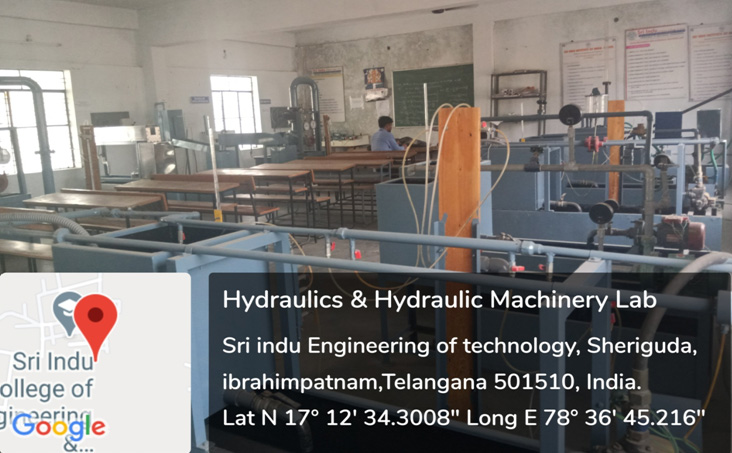
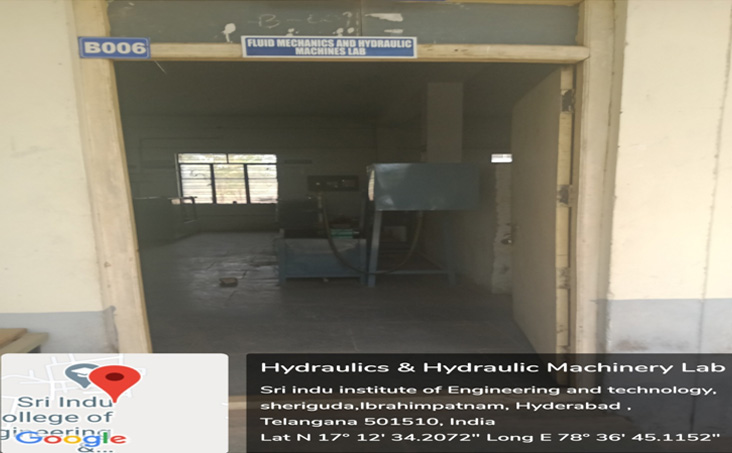
Labs for III Year I Semester
Objectives
- To learn laboratory tests and their procedures cement, fine aggregate, course aggregates and bitumen.
- To Evaluate fresh concrete properties
- To Understand the test procedures for characterization of Concrete and bituminous mixes
Test on Cement
- Normal Consistency and fineness of cement.
- Initial setting time and final setting time of cement.
- Specific gravity of cement
- Soundness of cement
- Compressive strength of cement
- Workability test on concrete by compaction factor, slump and Vee-bee.
Test on Aggregates (Coarse and Fine)
- Specific gravity (Pycnometer and wire basket), water absorption
- Shape (Flakiness and elongation indices)
- Impact and abrasion value tests
- Crushing resistance and durability tests
- Sieve Analysis and gradation charts (Job mix formula using Rothfuch’s charts)
- Bulking of sand, Bulk and compact densities of fine and coarse aggregates
Test on Fresh Concrete
- Slump test
- CF (compact factor stress)
- Vee-bee Test
- Flow Table Test
Test on Hardened Concrete
- Compression test on cubes & Cylinders
- Flexure test
- Split Tension Test
- Modulus of Elasti
Tests on Bitumen and Bituminous Concrete
- Penetration, softening point and spot test
- Ductility, Elastic recovery and viscosity
- Flash and fire points and specific gravity
- Marshall’s Stability (sample preparation and testing for stability and flow values)
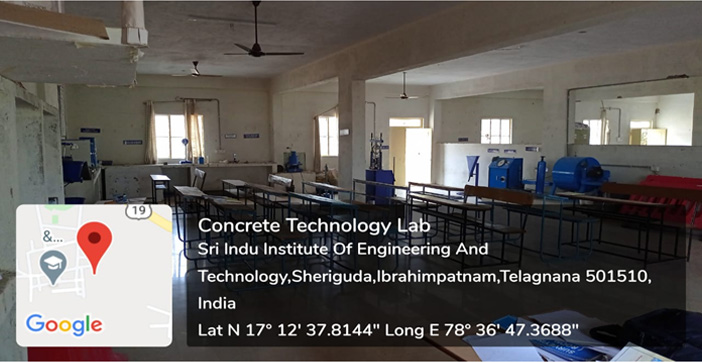
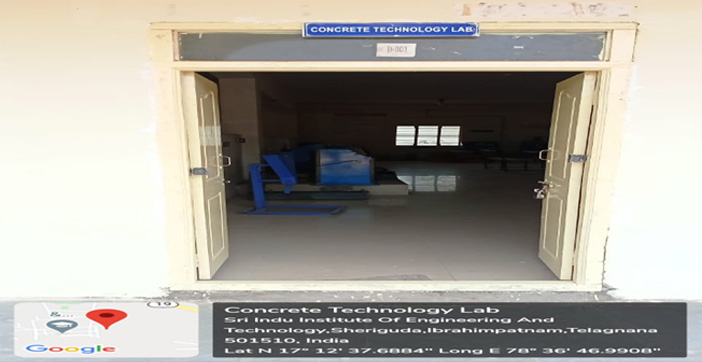
Objectives
To obtain index and engineering properties of locally available soils, and to understand the behavior of these soil under various loads.
List of Experiments
- Atterberg Limits (Liquid Limit, Plastic Limit, and shrinkage limit)
- a) Field density by core cutter method and b) Field density by sand replacement methods
- Determination of Specific gravity of soil Grain size distribution by sieve analysis.
- Permeability of soil by constant and variable head test methods.
- Standard Proctor’s Compaction Test.
- Determination of Coefficient of consolidation (square root time fitting method)
- Unconfined compression test.
- Direct shear test .
- Vane shear test.
- Differential free swell index (DFSI) test.
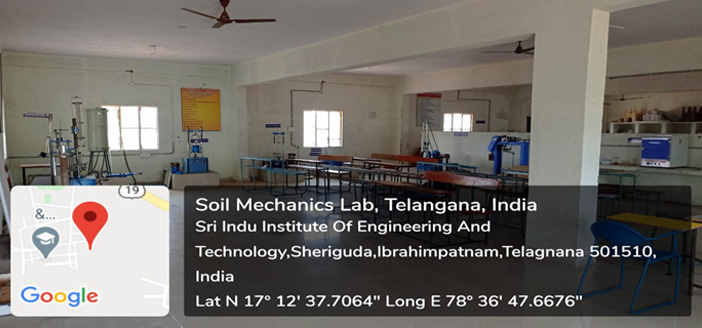
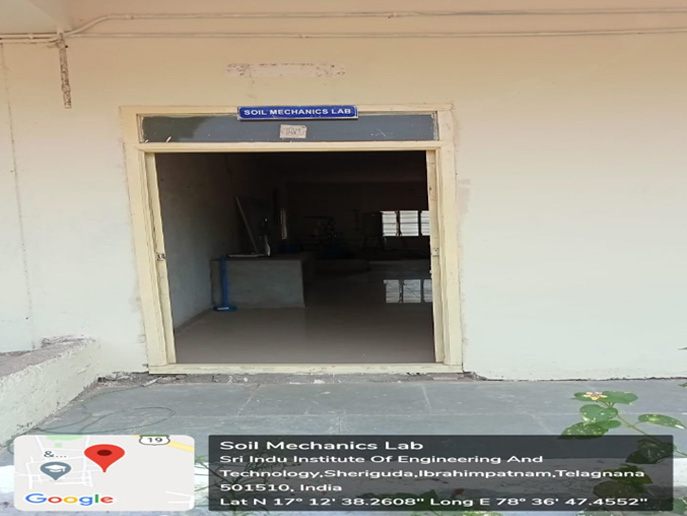
Labs for III Year II Semester
Objectives
- Perform the experiments to determine water and waste water quality
- Understand the water & waste water sampling, their quality standards
- Estimate quality of water, waste water, Industrial water
List of Experiments
- Determination of pH
- Determination of Electrical Conductivity
- Determination of Total Solids (Organic and inorganic)
- Determination of Acidity
- Determination of Alkalinity
- Determination of Hardness (Total, Calcium and Magnesium Hardness)
- Determination of Chlorides
- Determination of optimum coagulant Dosage
- Determination of Dissolved Oxygen (Winkler Method)
- Determination of COD
- Determination of BOD/DO
- Determination of Residual Chlorine
- Total count No.
- Noise level measurement
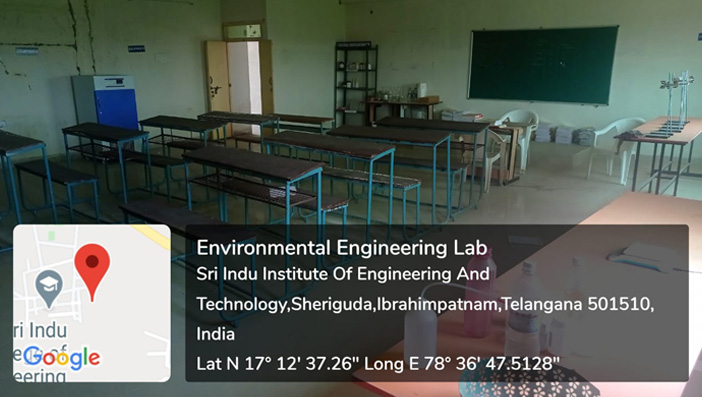
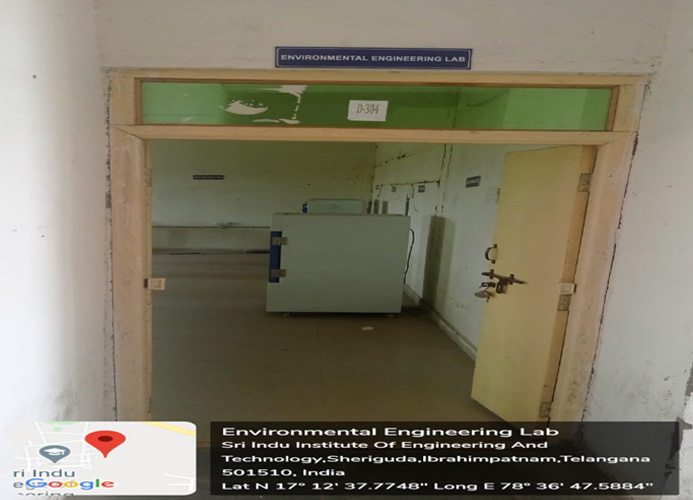
Objectives
- Learn the usage of any fundamental software for design
- Create geometries using pre-processor
- Analyses and Interpret the results using post processor
- Design the structural elements
List of Experiments
- Analysis & Design determinate structures using a software
- Analysis & Design of fixed & continuous beams using a software
- Analysis & Design of Plane Frames
- Analysis & Design of space frames subjected to DL & LL
- Analysis & Design of residential building subjected to all loads (DL,LL,WL,EQL)
- Analysis & Design of Roof Trusses
- Design and detailing of built up steel beam
- Developing a design programme for foundation using EXCEL Spread Sheet
- Detailing of RCC beam and RCC slab
- Detailing of Steel built up compression member
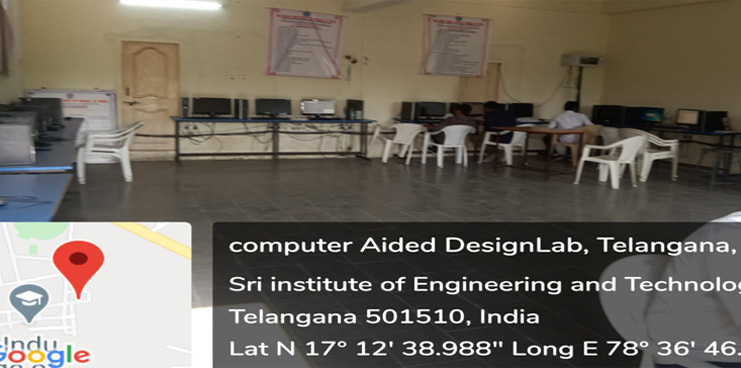
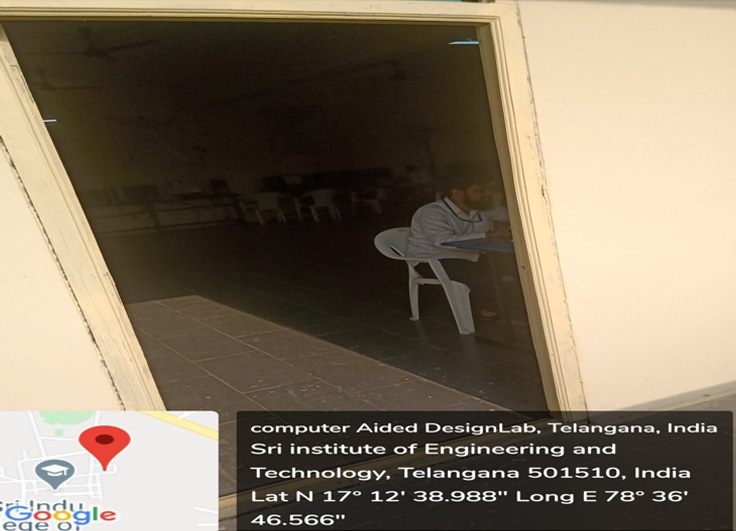
Labs for IV Year I Semester
Road Aggregates
- Aggregate Crushing value
- Aggregate Impact Test.
- Specific Gravity and Water Absorption.
- Abrasion Test
- Flakiness and elongation Indices of coarse Aggregates
Bituminous Materials
- Penetration Test
- Ductility Test
- Softening Point Test.
- Marshal stability Test
Traffic Studies
- Traffic volume counts-Mid Blocks
- Traffic volume counts-Junctions
- Spot speed studies
- Parking Studies
